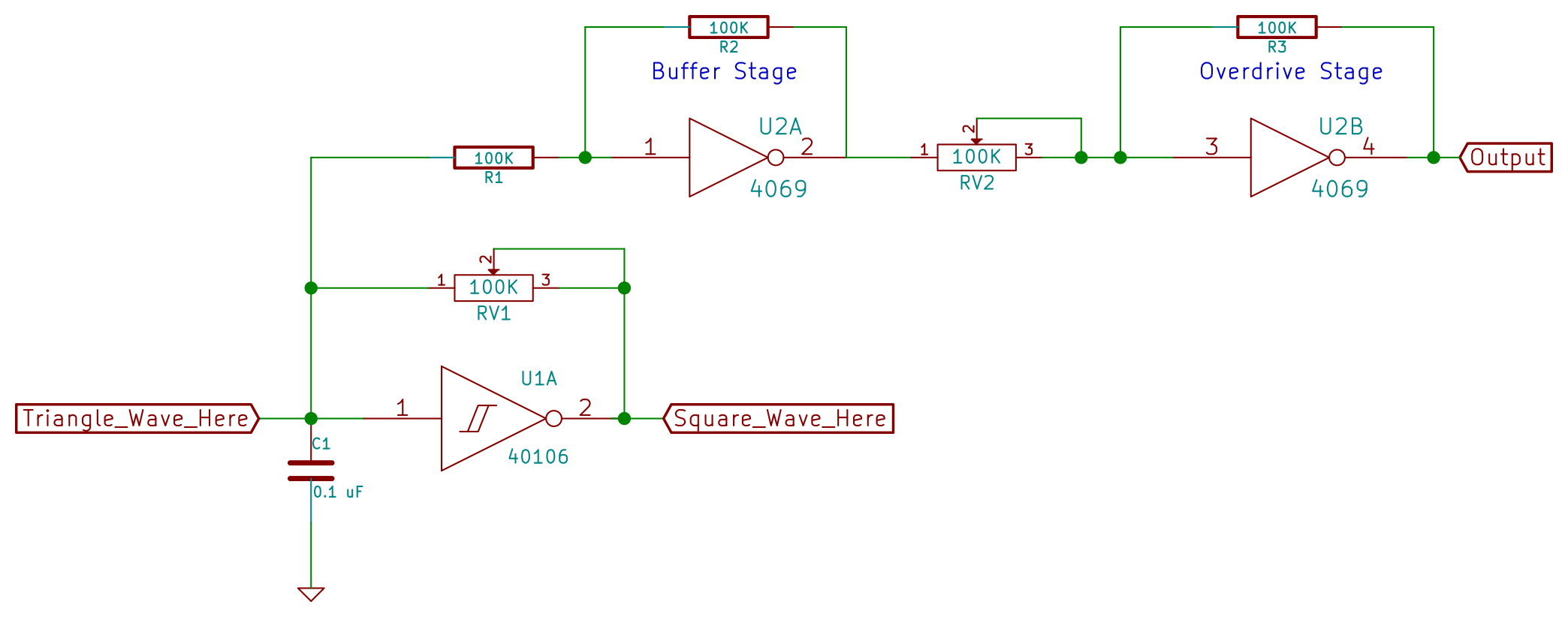Because of the way the Klangorium kit is built, it's a little bit difficult to get the overdriven triangle wave sound out of it, but because I love that sound so much, I'm going to show you how.
Triangles
The regular triangle wave is easy-peasy. First off, just tap into the input and connect it to the high-gain mixer out. Done. On the breadboard, we needed an output-buffer stage, but here the output amplifier / active mixer serves the same purpose.
The Overdrive Effect
The overdrive effect relied on running our sound through a unity-gain buffer stage and then through another amplifier stage with enough gain to start distorting. The good news is that the Klangorium has two 4069UB inverter stages free. The bad news is that we're going to need some extra parts.

In particular, we'll need two 100k resistors for the first stage buffer, and a 100k pot and another 100k resistor for the overdrive section.
You can connect these into the circuit however you like, but I find it easiest to take two female-female cables and insert the resistor in the middle. You've effectively got a double-length cable with 100k ohm's resistance. Make three of these, and then do the same thing with the potentiometer.
Now, starting with the input terminal of an oscillator (where the triangle waves come out) connect it to the input of one of the buffers with the 100k ohm cable. Connect the output of that buffer to it's input with another 100k ohm cable.
Now using the potentiometer cable, connect the output of that first buffer to the input of a second. Using the last 100k ohm cable, connect the second buffer's input and output together. Finally, the output of that buffer should go to a low-gain mixer input.

And do note that a little overdrive can be tastefully applied anywhere. For instance, it's great with the drum voice.
 Elliot Williams
Elliot Williams
Discussions
Become a Hackaday.io Member
Create an account to leave a comment. Already have an account? Log In.